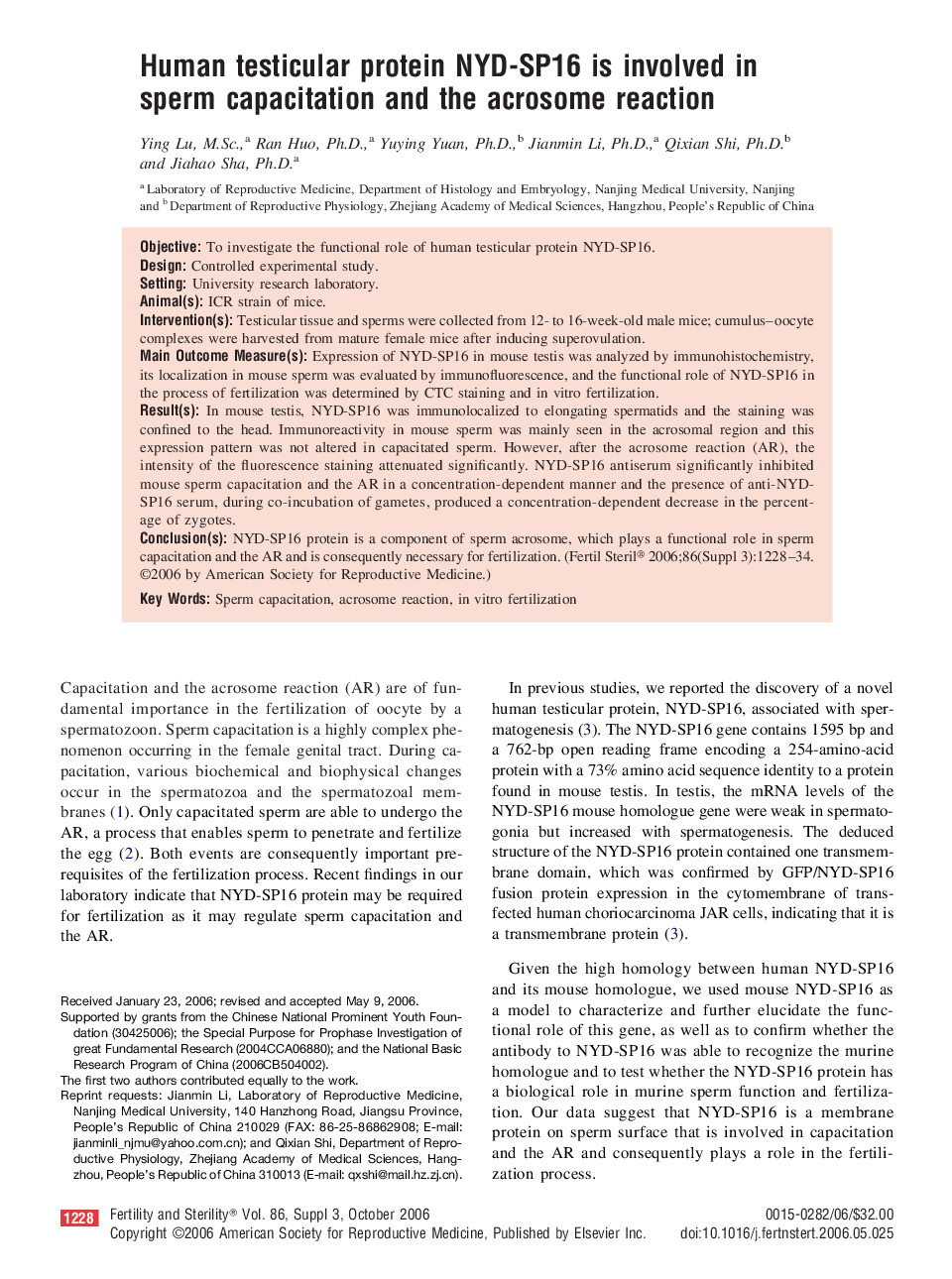| Article ID | Journal | Published Year | Pages | File Type |
|---|---|---|---|---|
| 3940796 | Fertility and Sterility | 2006 | 7 Pages |
ObjectiveTo investigate the functional role of human testicular protein NYD-SP16.DesignControlled experimental study.SettingUniversity research laboratory.Animal(s)ICR strain of mice.Intervention(s)Testicular tissue and sperms were collected from 12- to 16-week-old male mice; cumulus–oocyte complexes were harvested from mature female mice after inducing superovulation.Main Outcome Measure(s)Expression of NYD-SP16 in mouse testis was analyzed by immunohistochemistry, its localization in mouse sperm was evaluated by immunofluorescence, and the functional role of NYD-SP16 in the process of fertilization was determined by CTC staining and in vitro fertilization.Result(s)In mouse testis, NYD-SP16 was immunolocalized to elongating spermatids and the staining was confined to the head. Immunoreactivity in mouse sperm was mainly seen in the acrosomal region and this expression pattern was not altered in capacitated sperm. However, after the acrosome reaction (AR), the intensity of the fluorescence staining attenuated significantly. NYD-SP16 antiserum significantly inhibited mouse sperm capacitation and the AR in a concentration-dependent manner and the presence of anti-NYD-SP16 serum, during co-incubation of gametes, produced a concentration-dependent decrease in the percentage of zygotes.Conclusion(s)NYD-SP16 protein is a component of sperm acrosome, which plays a functional role in sperm capacitation and the AR and is consequently necessary for fertilization.
